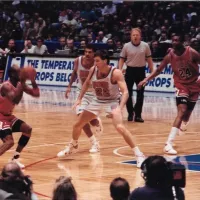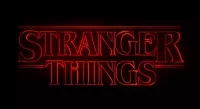Ukraine is a large country in Eastern Europe, second in size only to Russia. It shares borders with Russia to the east and northeast, Belarus to the north, Poland and Slovakia to the west, Hungary, Romania, and Moldova to the southwest, and the Black Sea and Sea of Azov to the south and southeast. Kyiv is the capital and largest city. The official language is Ukrainian.
1906: Eastward Emigration after Trans-Siberian Railway Opening
In the ten years after the opening of the Trans-Siberian Railway in 1906, an additional 1.6 million Ukrainians emigrated to the east.
1917: Ukrainian People's Republic formed
In 1917, following the Russian Revolution, the short-lived Ukrainian People's Republic was formed.
1921: End of Fighting on Ukrainian Soil
Fighting on Ukrainian soil persisted until late 1921 with the end of World War I and the Russian Civil War.
1921: Famine hits the eastern provinces
In 1921, famine further hit the eastern provinces of Ukraine, exacerbating the devastation of the Russian Civil War.
July 1922: Arrests and Deportations of Ukrainian Intellectuals Begin
In July 1922, arrests and deportations of Ukrainian intellectuals began in Soviet Ukraine.
1922: Ukrainian Soviet Socialist Republic Established
In 1922, the Bolsheviks established the Ukrainian Soviet Socialist Republic, which then became a constituent republic of the Soviet Union.
1932: Socialist realism becomes state policy
In 1932, Stalin's decree "On the Reconstruction of Literary and Art Organisations" made socialist realism the official state policy in the Soviet Union, stifling artistic creativity.
1935: Abandonment of Ukrainian Autonomy in Poland
After Piłsudski's death in 1935, the policy of offering Ukrainian autonomy in Poland was abandoned due to unrest and assassinations.
September 1939: Division of Poland and Ukrainian Territory Incorporation
In September 1939, German and Soviet troops divided Poland, leading to Eastern Galicia and Volhynia becoming part of Ukraine.
1939: Western Ukrainians join the Soviet Union
In 1939, some western Ukrainians joined the Soviet Union.
1940: Territorial gains secured
In 1940, further territorial gains were secured when the Ukrainian SSR incorporated the northern and southern districts of Bessarabia, Northern Bukovina, and the Hertsa region from territories ceded by Romania to the USSR.
June 1941: German Invasion of the Soviet Union
On June 22, 1941, German armies invaded the Soviet Union, initiating nearly four years of total war.
1942: Creation of the Ukrainian Insurgent Army
In 1942, the independent Ukrainian Insurgent Army (UPA) movement arose in Western Ukraine.
1943: UPA Massacres of Ethnic Poles
From mid-1943 until the end of the war, the UPA carried out massacres of ethnic Poles in the Volhynia and Eastern Galicia regions.
1944: Ukrainian Participation in Soviet Resistance
In 1944, half of the Pro-Soviet partisan guerrilla resistance units, which counted up to 500,000 troops, were Ukrainian.
1945: Soviet Ukraine joined the United Nations
In 1945, Soviet Ukraine joined the United Nations as one of the original members.
1945: Ukrainian SSR founding member of the United Nations
In 1945, the Ukrainian SSR became one of the founding members of the United Nations.
1946: Famine caused by drought and wartime destruction
In 1946, a famine caused by drought and wartime destruction occurred.
1947: International Recognition of Territorial Gains
In 1947, the territorial gains of the USSR, including those impacting Ukraine, were internationally recognized by the Paris peace treaties.
1947: Famine continues, worsening situation
The famine from 1946 continued into 1947, worsening the situation and causing even more deaths.
1950: Surpassing Pre-War Levels
By 1950, the republic had fully surpassed pre-war levels of industry and production.
January 1953: Ukrainians comprised 20% of the total of adult special deportees
As of January 1, 1953, Ukrainians were second only to Russians among adult "special deportees", comprising 20% of the total.
1953: Khrushchev becomes the leader of USSR
Following the death of Stalin in 1953, Nikita Khrushchev became the new leader of the USSR, and he began the policies of de-stalinisation.
1964: Leonid Brezhnev became the General Secretary
In 1964, Leonid Brezhnev became the General Secretary of the Communist Party of the Soviet Union.
1982: Brezhnev's term ends
In 1982, Leonid Brezhnev's term as General Secretary of the Communist Party of the Soviet Union ended.
April 1986: Chernobyl Disaster
On April 26, 1986, a reactor in the Chernobyl Nuclear Power Plant exploded, resulting in the Chernobyl disaster.
1986: Chernobyl Nuclear Power Plant accident
In 1986, the accident at the Chernobyl Nuclear Power Plant caused radiation contamination in the northeast of Ukraine.
1988: Growth of higher education institutions in Soviet era
By 1988, the number of higher education institutions in Ukraine had increased to 146, accommodating over 850,000 students during the Soviet period.
July 1990: Declaration of State Sovereignty of Ukraine adopted
On 16 July 1990, the newly elected Supreme Soviet of the Ukrainian Soviet Socialist Republic adopted the Declaration of State Sovereignty of Ukraine as part of the "parade of sovereignties".
August 1991: Ukraine proclaims outright independence
On 24 August 1991, following a failed coup in Moscow, Ukraine proclaimed outright independence.
1991: Start of economic recession
In 1991, Ukraine began experiencing a severe economic recession during its transition to a market economy, losing 60% of its GDP between 1991 and 1999.
1991: Ukraine Gained Independence
In 1991, Ukraine gained its independence as the Soviet Union dissolved and declared itself neutral.
1991: Reestablishment of Ukrainian independence
Literary freedom grew alongside the reestablishment of Ukrainian independence in 1991.
1991: Independence leads to politicization of "the Ukraine" usage
Since Ukraine's declaration of independence in 1991, the usage of "the Ukraine" has become politicised and is now rarer.
1991: Improved judicial system since independence
Since Ukraine's independence in 1991, the judicial system has improved.
1992: Ukraine joins OSCE and North Atlantic Cooperation Council
In 1992, Ukraine joined the Conference on Security and Cooperation in Europe (now the OSCE) and became a member of the North Atlantic Cooperation Council.
1992: Ukraine signed the Lisbon Protocol
In 1992, Ukraine signed the Lisbon Protocol, agreeing to relinquish all nuclear weapons to Russia for disposal and join the Nuclear Non-Proliferation Treaty.
1992: Contributions to UN peacekeeping operations since 1992
Since 1992, Ukraine has made contributions to UN peacekeeping operations.
1993: Peak population
Following the dissolution of the Soviet Union, Ukraine's population hit a peak of roughly 52 million in 1993.
1993: Hyperinflation peaked
In 1993, Ukraine experienced hyperinflation that peaked at 10,000%.
1993: Sergey Bubka's Pole Vault Record
Sergey Bubka held the record in the Pole vault starting in 1993.
1994: Signing of Budapest Memorandum
In 1994, Ukraine signed the Budapest memorandum, agreeing to hand over nuclear weapons in exchange for security guarantees.
June 1996: Constitution of Ukraine adopted
On 28 June 1996, the Constitution of Ukraine was adopted and ratified at the 5th session of the Verkhovna Rada.
1996: Ukraine became free of nuclear weapons
By 1996, Ukraine had eliminated all nuclear weapons from its territory.
1996: New Constitution Adopted
In 1996, Ukraine adopted a new constitution during its transition to a free market liberal democracy.
1998: EU Partnership and Cooperation Agreement
In 1998, the European Union's Partnership and Cooperation Agreement (PCA) with Ukraine went into force.
1998: Sharp fall of Hryvnia
In late 1998, Ukraine's new currency, the hryvnia, fell sharply partially due to the Russian debt default.
December 1999: EU Summit in Helsinki recognizes Ukraine's long-term aspirations
The EU Summit in Helsinki in December 1999 recognized Ukraine's long-term aspirations but did not discuss association.
1999: End of economic recession
By 1999, Ukraine's economic recession ended after losing 60% of its GDP since 1991.
1999: Ukraine served as a non-permanent member of the UN Security Council
From 1999 to 2001, Ukraine served as a non-permanent member of the UN Security Council.
2000: Museum of Pysanka built in Kolomyia
In 2000, the museum of Pysanka was built in the city of Kolomyia near the foothills of the Carpathian Mountains.
2001: Ethnic composition according to census
According to the 2001 census, ethnic Ukrainians made up roughly 78% of the population, while Russians were the largest minority, at some 17.3% of the population.
2001: Ukraine served as a non-permanent member of the UN Security Council
From 1999 to 2001, Ukraine served as a non-permanent member of the UN Security Council.
2002: NATO-Ukraine Action Plan signed
In 2002, deeper cooperation with NATO was set by the NATO-Ukraine Action Plan.
2002: Courts given legal freedom
Since 2002, the courts enjoy legal, financial and constitutional freedom guaranteed by Ukrainian law.
2003: Ukrainian unit deployed to Iraq
In 2003, a Ukrainian unit was deployed as part of the multinational force in Iraq under Polish command.
2004: Orange Revolution
In 2004, the Orange Revolution began, ushering in electoral and constitutional reforms.
2004: Criticism of police during Orange Revolution
Law enforcement agencies, particularly the police, faced criticism for their heavy handling of the 2004 Orange Revolution.
2005: Education system transitioned to twelve-year program
In 2005, Ukraine replaced its eleven-year school program with a twelve-year one, beginning with primary education at age six, followed by middle and upper secondary education.
2005: Ukrainian unit deployed to Iraq
In 2005, a Ukrainian unit was deployed as part of the multinational force in Iraq under Polish command.
2005: Orange Revolution Reforms
The Orange Revolution continued into 2005, ushering in electoral and constitutional reforms.
2007: Museum of Pysanka nominated as monument of modern Ukraine
In 2007, the museum of Pysanka won a nomination as the monument of modern Ukraine, part of the Seven Wonders of Ukraine action.
2008: NATO declared Ukraine would eventually become a member
During the 2008 Bucharest summit, NATO declared that Ukraine would eventually become a member of NATO when it meets the criteria for accession.
2008: Vasyl Lomachenko wins Olympic gold medal
Vasyl Lomachenko won an Olympic gold medal in 2008.
2010: Expert group to reform court system formed
In 2010, President Yanukovych formed an expert group to make recommendations on how to reform the court system.
2010: Court proceedings can be held in Russian
Since 2010 court proceedings can be held in Russian by mutual consent of the parties. Previously all court proceedings had to be held in Ukrainian.
2011: Ukraine granted right to organise EuroBasket 2015
In 2011, Ukraine was granted the right to organise EuroBasket 2015.
August 2012: New law on regional languages
Effective in August 2012, a new law on regional languages entitled any local language spoken by at least a 10 percent minority be declared official within that area.
2012: Formation of National Register of Elements of the Intangible Cultural Heritage of Ukraine
In 2012, the Ministry of Culture of Ukraine formed the National Register of Elements of the Intangible Cultural Heritage of Ukraine.
2012: Vasyl Lomachenko wins Olympic gold medal
Vasyl Lomachenko won an Olympic gold medal in 2012.
2013: Ukraine's national basketball team finishes sixth in EuroBasket
In 2013, the Ukraine national basketball team finished sixth in EuroBasket and qualified to the FIBA World Cup for the first time in its history.
2013: Euromaidan protests begin
In the winter of 2013, protests on the Euromaidan began in response to Yanukovych's refusal to sign the European Union–Ukraine Association Agreement.
February 2014: Yanukovych flees Ukraine
By the end of the protests on 21 February 2014, Yanukovych fled from Ukraine and was removed by the parliament in what is termed the Revolution of Dignity.
March 2014: Annexation of Crimea by Russia
In late February and early March 2014, Russia annexed Crimea using its Navy in Sevastopol and "little green men".
June 2014: Ukraine signs EU association agreement
In June 2014, Ukraine signed the EU association agreement.
August 2014: Open invasion in Donbas
On 24 August 2014, Russian forces started an open invasion in Donbas.
2014: Modernisation after Russo-Ukrainian War
As part of its modernisation after the beginning of the Russo-Ukrainian War in 2014, junior officers were allowed to take more initiative and a territorial defence force of volunteers was established.
2014: Population decrease
From 1993 to 2014, Ukraine's total population decreased by 6.6 million, or 12.8%.
2014: Euromaidan Revolution and Russian Annexation of Crimea
In 2014, a series of mass demonstrations known as Euromaidan led to a revolution, and Russia unilaterally occupied and annexed Ukraine's Crimean Peninsula.
2014: Repeal of law on regional languages
In 2014, following the Revolution of Dignity, the Ukrainian Parliament voted to repeal the law on regional languages, making Ukrainian the sole state language at all levels.
2014: Association Agreement signed between Ukraine and EU
In 2014, the Association Agreement between Ukraine and the European Union was signed.
2014: Annexation of Crimea by Russia
In 2014, the Russian Federation annexed Sevastopol and the Autonomous Republic of Crimea, which are internationally recognised as parts of Ukraine.
2014: Ukrainian frigate joined Operation Atalanta
In 2014, the Ukrainian frigate Hetman Sagaidachniy joined the European Union's counter-piracy Operation Atalanta off the coast of Somalia.
2014: Start of the Russo-Ukrainian War
In 2014, the start of the Russo-Ukrainian War caused a sharp recession in Ukraine.
2014: End of Sergey Bubka's Pole Vault Record
Sergey Bubka held the record in the Pole vault until 2014.
2014: Fall in Crimea's visitor numbers following Russian annexation
Tourism was the mainstay of Crimea's economy before a major fall in visitor numbers following the Russian annexation in 2014.
February 2015: Frontline established after withdrawal from Debaltseve
In February 2015, after Ukrainian troops withdrew from Debaltseve, the frontline was established in the conflict in Donbas.
2015: Energy policy prioritised diversifying energy supply
Most gas and oil is imported, but since 2015 energy policy has prioritised diversifying energy supply.
2015: EuroBasket in Ukraine
Ukraine was granted a right to organise EuroBasket in 2015.
January 2016: DCFTA comes into force
In January 2016, the Deep and Comprehensive Free Trade Area (DCFTA) came into force, integrating Ukraine into the European Single Market and the European Economic Area.
2016: Protestant Population in Ukraine
In 2016, Protestants made up 1.9% of the population in Ukraine.
2017: Education law bars primary education in any language but Ukrainian
In 2017, Ukraine's education law prohibited primary education in public schools in grade five and up in any language other than Ukrainian.
2018: Oleksandr Usyk becomes undisputed cruiserweight champion
In 2018, Oleksandr Usyk became the undisputed cruiserweight champion.
2018: Protestant Population Growth in Ukraine
In 2018, the Protestant population in Ukraine rose to 2.2% of the total population.
January 2019: Orthodox Church of Ukraine recognised as independent
In January 2019, the Orthodox Church of Ukraine was recognised as independent of Moscow.
February 2019: Amendment to constitution regarding EU and NATO
On 7 February 2019, the Verkhovna Rada voted to amend the constitution to state Ukraine's strategic objectives as joining the European Union and NATO.
2019: Poverty and Unemployment Rate
About 1% of Ukrainians lived below the national poverty line in 2019. Unemployment in Ukraine was 4.5% in 2019.
2019: Fossil fuel subsidies
Fossil fuel subsidies were US$2.2 billion in 2019.
2019: Religious Demographics in Ukraine
In 2019, 82% of Ukrainians identified as Christians, with Eastern Orthodox being the largest group at 72.7%. Ukrainian Greek Catholics constituted 8.8%, Protestants 2.3%, and Latin Church Catholics 0.9%. Smaller percentages followed Judaism, Islam, and Hinduism each at 0.2%.
2019: Law allowing for official use of regional languages found unconstitutional
In 2019, the law allowing for official use of regional languages was found unconstitutional.
2020: Wheat exports
During the 2020/21 international wheat marketing season (July–June), Ukraine ranked as the sixth largest wheat exporter.
2020: Government debt
In 2020 Ukraine's government debt was roughly 50% of its nominal GDP.
2020: Lublin Triangle initiative created
In 2020, Lithuania, Poland and Ukraine created the Lublin Triangle initiative, which aims to create further cooperation between the three historical countries of the Polish–Lithuanian Commonwealth and further Ukraine's integration and accession to the EU and NATO.
2020: Arrival of COVID-19 pandemic
In 2020, the arrival of the COVID-19 pandemic made economic recovery more difficult due to low vaccination rates.
2021: Food security
According to the Food and Agriculture Organisation of the United Nations (FAO), Eritrea sourced 47 percent of its wheat imports in 2021 from Ukraine. Overall, more than 30 nations depend on Ukraine and the Russian Federation for over 30 percent of their wheat import needs, many of them in North Africa and Western and Central Asia.
2021: Important sectors
In 2021 mineral commodities and light industry were important sectors. Ukraine produces nearly all types of transportation vehicles and spacecraft.
2021: Religious Landscape in Ukraine
In 2021, a survey by the Kyiv International Institute of Sociology (KIIS) found that 82% of Ukrainians identified as religious, while 7% were atheists. The level of religiosity in Ukraine was highest in Western Ukraine (91%) and lowest in the Donbas (57%) and Eastern Ukraine (56%).
2021: Agriculture as largest sector of the economy
In 2021, agriculture was the biggest sector of the economy in Ukraine. Also in 2021, Ukraine's GDP per capita by purchasing power parity was just over $14,000.
2021: Association Trio Formed
In 2021, the Association Trio was formed through a joint memorandum signed by the Foreign Ministers of Georgia, Moldova, and Ukraine to enhance cooperation and dialogue with the EU. Also in 2021, Ukraine was preparing to formally apply for EU membership in 2024.
2021: Average salary in Ukraine reached highest level
In 2021, the average salary in Ukraine reached its highest level at almost ₴14,300 (US$525) per month.
2021: IT industry contribution
The IT industry contributed almost 5 per cent to Ukraine's GDP in 2021.
February 2022: UNESCO's assessment of damage to Ukrainian sites begins
Beginning in February 2022, UNESCO started verifying damage to Ukrainian sites, including religious sites, buildings of artistic or historical interest, monuments, and libraries.
February 2022: Martial law declared
In February 2022, martial law was declared when Russia invaded Ukraine, and continues.
February 2022: Russia invades Ukraine
In the early hours of 24 February 2022, Russia launched a full-scale invasion of Ukraine.
February 2022: Full-scale invasion by Russia
On 24 February 2022, Ukraine experienced a full-scale invasion by Russia, causing further economic disruption.
June 2022: Ukraine granted EU candidate status
Following the Russian invasion, President Zelenskyy requested immediate EU admission and, in June 2022, Ukraine was granted candidate status.
2022: Russian invasion causes injuries and traumas
As a result of the 2022 Russian invasion of Ukraine, millions suffered physical injuries and psychological traumas. The World Health Organization documented over 2254 attacks on healthcare in Ukraine since the start of the invasion.
2022: Internet usage
As of 2022, 75% of the population in Ukraine use the internet, and social media is widely used by the government and people.
2022: Population before the Russian invasion
Before the 2022 Russian invasion of Ukraine the country had an estimated population of over 41 million people.
2022: IMF expected the economy to shrink
Despite supplying emergency financial support, the IMF expected the economy to shrink considerably by 35% in 2022 due to Russia's invasion.
2022: Russian invasion of Ukraine
During the first few weeks of the 2022 Russian invasion the military found it difficult to defend against shelling, missiles and high level bombing; but light infantry used shoulder-mounted weapons effectively to destroy tanks, armoured vehicles and low-flying aircraft.
2022: Continued IT industry contribution
In 2022 the IT industry continued to contribute to Ukraine's GDP both inside and outside the country.
2022: Ukrainian refugee crisis
In early 2022, over 4.1 million fled the country in the aftermath of the 2022 Russian invasion of Ukraine, causing the Ukrainian refugee crisis.
2022: Destruction of infrastructure by Russian invasion
Many roads and bridges were destroyed, and international maritime travel was blocked by the 2022 Russian invasion of Ukraine.
2022: Energy infrastructure destroyed
Some energy infrastructure was destroyed in the 2022 Russian invasion of Ukraine.
January 2023: Odesa's historic center placed on UNESCO's List of World Heritage in Danger
Since January 2023, the historic centre of Odesa has been inscribed on the List of World Heritage in Danger by UNESCO.
March 2023: UNESCO verifies damage to 247 sites
By March 2023, UNESCO had verified the damage to 247 sites in Ukraine, including 107 religious sites, 89 buildings of artistic or historical interest, 19 monuments, and 12 libraries.
August 2023: U.S. officials estimated Ukrainian soldier casualties
In August 2023, U.S. officials estimated that up to 70,000 Ukrainian soldiers were killed and 100,000 to 120,000 wounded during the Russian invasion of Ukraine.
2023: Corruption Perceptions Index rating
In 2023, Ukraine was rated 104th out of 180 in the Corruption Perceptions Index.
2023: Anti-corruption drive begins
In early 2023, a broad anti-corruption drive began with resignations of officials during a government reshuffle.
March 2024: 20 Days in Mariupol wins Oscar
On 10 March 2024, the documentary film "20 Days in Mariupol" won the Oscar in the category "Best Documentary Feature Film", marking the first Oscar in Ukraine's history.
October 2024: Decline in Ukrainian Health Due to War
According to the World Health Organization's October 2024 assessment, 68% of Ukrainians reported a decline in their health compared to the pre-war period, with the war worsening physical and mental health, especially among children.
2024: Ukraine planned to apply for EU membership
As of 2021, Ukraine was preparing to formally apply for EU membership in 2024, in order to join the European Union in the 2030s.
2024: Lowest Nominal GDP per Capita in Europe
As of 2024, Ukraine has the lowest nominal GDP per capita in Europe.
2024: Estimated population in Ukrainian-controlled regions
The Ukrainian government estimates that the population in the regions controlled by Ukraine was 25 to 27 million in 2024.
2024: Gas transit contract expires
The contract to transit Russian gas expires at the end of 2024.
June 2025: Ukraine legalised multiple citizenship
In June 2025, Ukraine legalised multiple citizenship.
September 2025: National Register of Elements of the Intangible Cultural Heritage of Ukraine
As of September 2025, the National Register of Elements of the Intangible Cultural Heritage of Ukraine consists of 115 items.
2025: Ukraine's Innovation Ranking
Ukraine was ranked 66th in the Global Innovation Index in 2025.
Mentioned in this timeline

Basketball is a team sport played on a rectangular court...
The Union of Soviet Socialist Republics USSR existed from to...

Martial law is the imposition of military rule in place...
Belarus is a landlocked country in Eastern Europe bordered by...

News encompasses information about current events disseminated through various media...
Iraq officially the Republic of Iraq is a West Asian...
Trending
26 days ago Marcus Freeman: Notre Dame coach considered for Giants head coaching vacancy in NFL.
2 months ago ACA Subsidies Expiration Fuels Premium Fears Amid Government Shutdown, Impacting Covered California

1 month ago Cam Newton Reacts to Drake Maye's Taunt; Patriots Champ Rips Newton's Criticism.

2 months ago Upstart's Q3 Earnings: Mixed Results, Soft Q4 Guidance, and Stock Slides After Announcement.
2 months ago Great Salt Lake Dust Cost Revealed; Ogden Canyon Restaurant Set to Reopen.

1 month ago Jake Paul to Fight Anthony Joshua on December 19: A Sensational Boxing Match
Popular

Stranger Things created by the Duffer Brothers is a popular...

XXXTentacion born Jahseh Dwayne Ricardo Onfroy was a controversial yet...
The Kennedy Center Honors are annual awards recognizing individuals and...
Turning Point USA TPUSA is an American nonprofit organization founded...

Bernie Sanders is a prominent American politician currently serving as...

Candace Owens is an American conservative political commentator and author...